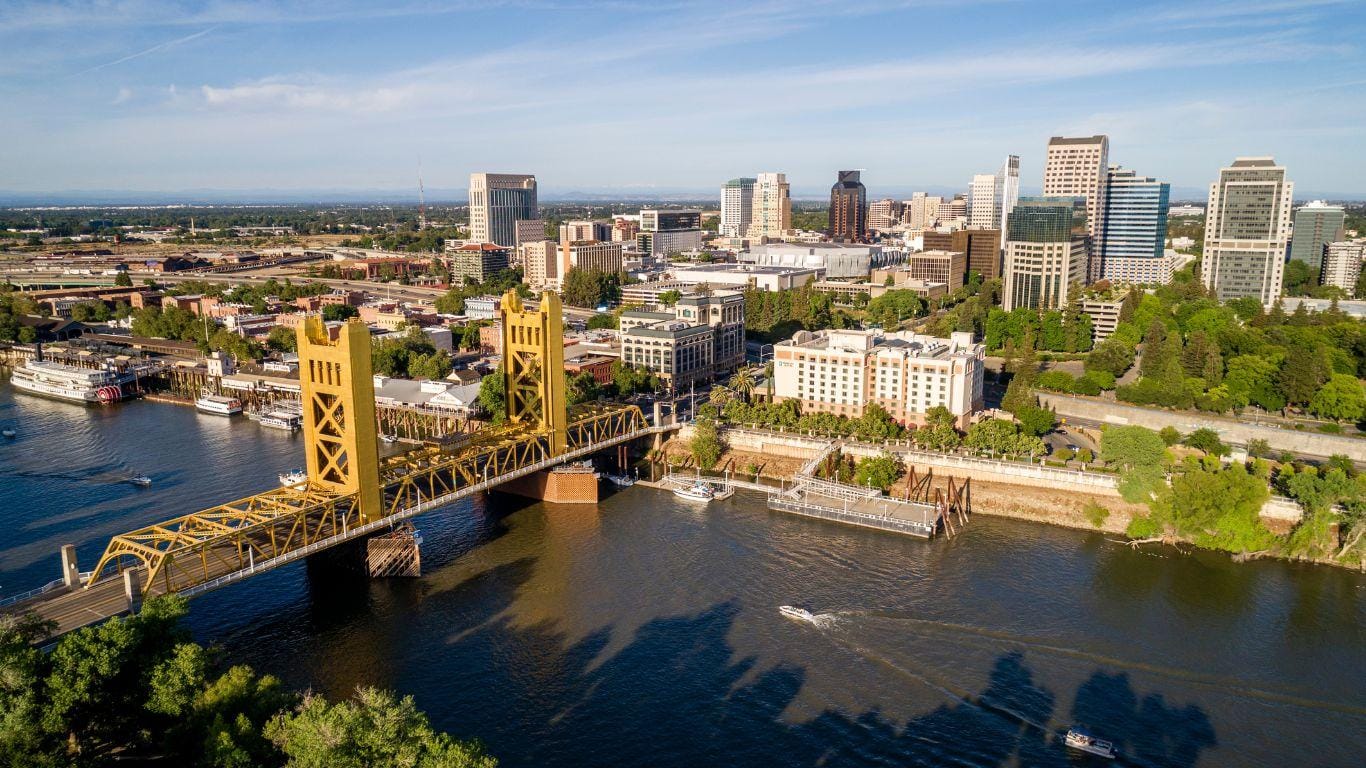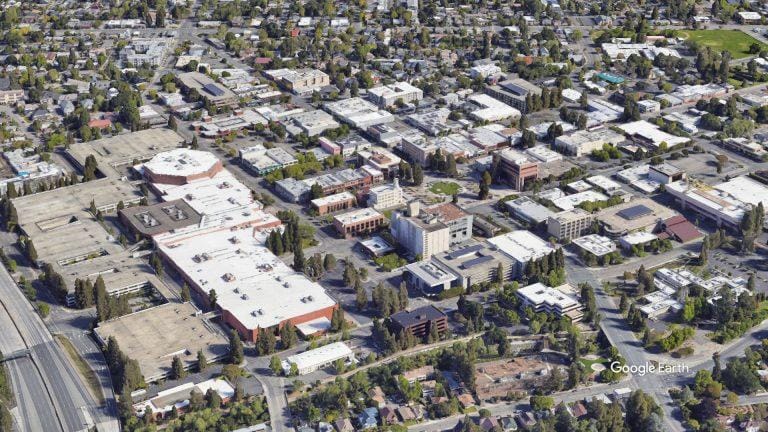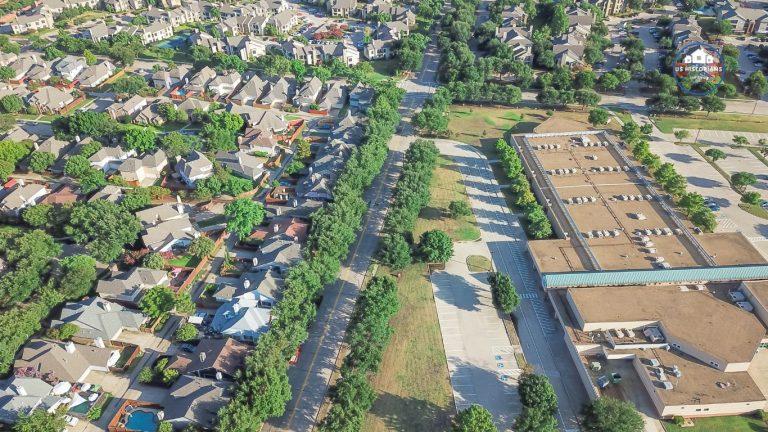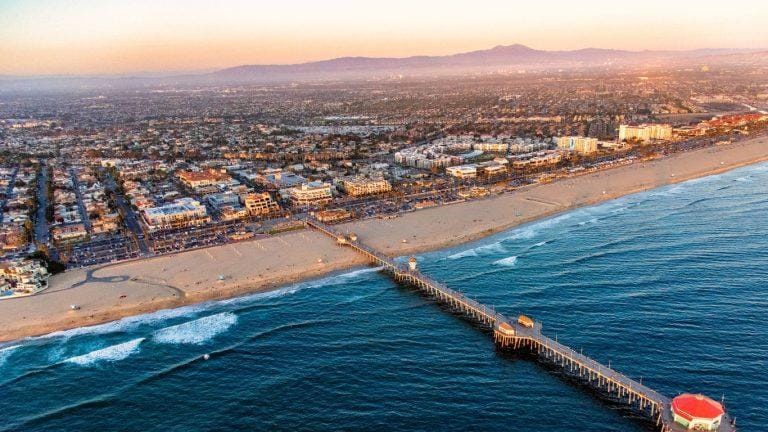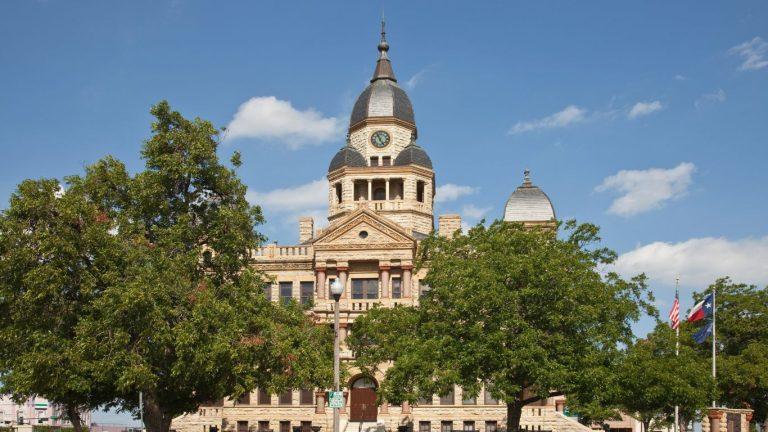Best Places to Live in Sacramento
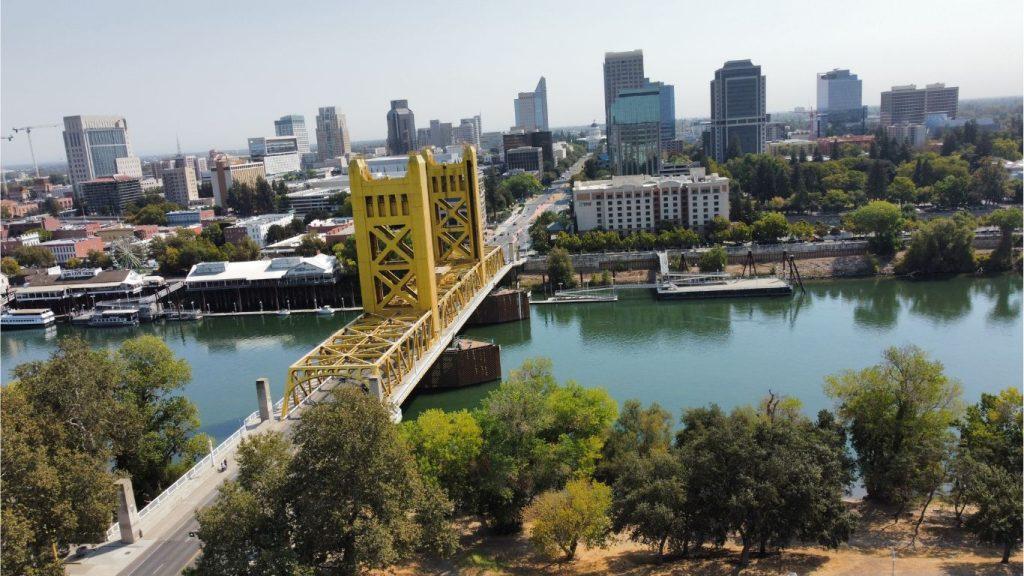
Sacramento is the capital city of California, located in the north-central part of the state. Sacramento has a population of about 532,000 people and has a rich history as a Gold Rush city, a political center, and a diverse community. Some of the attractions in Sacramento include the California State Capitol, the Crocker Art Museum, the Old Sacramento Historic District, and the Tower Bridge.
Sacramento is also known for its tree canopy, which covers about 43 percent of the city and is the largest of any city in the United States. Sacramento hosts several annual events, such as the California State Fair, the Sacramento Jazz Festival, and the Farm-to-Fork Festival, that celebrate the city’s culture, cuisine, and agriculture. Sacramento is home to several professional sports teams, such as the Sacramento Kings (basketball), the Sacramento Republic FC (soccer), and the Sacramento River Cats (baseball).
But with so many options, how do you choose the best place to live in Sacramento? What are the factors that you should consider when looking for your ideal home? And what are the pros and cons of living in different areas of Sacramento?
In this article, we will explore five of the best places to live in Sacramento, based on various criteria such as location, population, cost of living, quality of life, and amenities.
These are the five best places to live in Sacramento:
- Folsom
- Davis
- Fair Oaks
- Roseville
- Rocklin
Let’s take a closer look at each of these places and see what makes them stand out.
For those considering a broader range of options in Northern California, exploring the ‘Best Places to Live in Alameda County’ could offer valuable insights and comparisons to our top picks in Sacramento.
1. Folsom
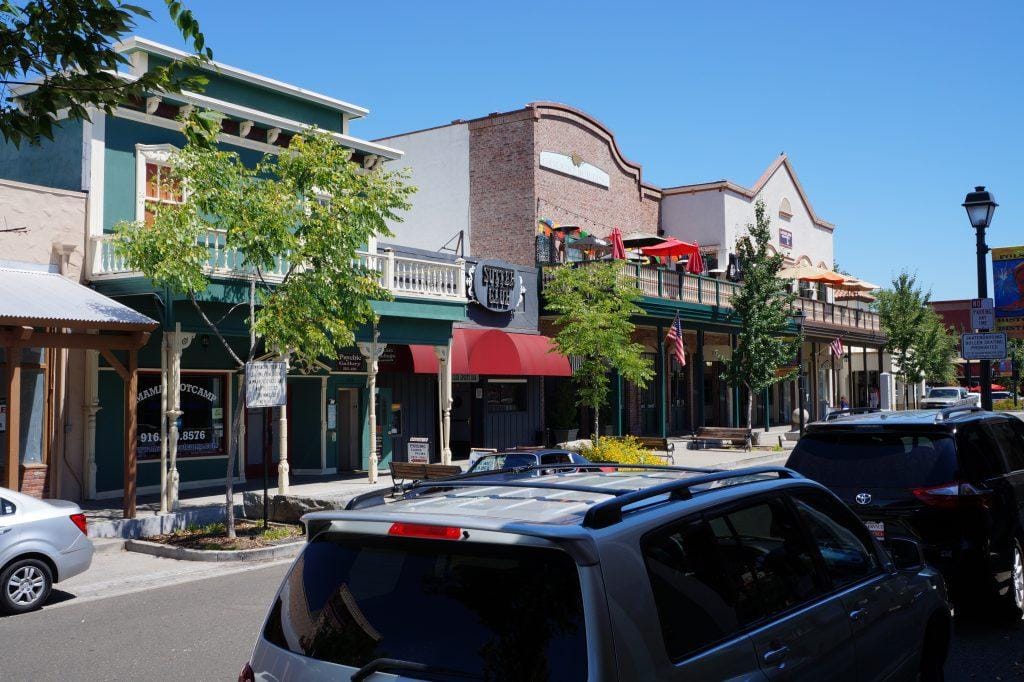
Folsom is a city in Sacramento County, located about 24 miles northeast of downtown Sacramento. It is best known for its historic Folsom Prison, which inspired the famous song by Johnny Cash, and for its role in the California Gold Rush.
Folsom is situated on the banks of the American River, near the foothills of the Sierra Nevada. It is bordered by El Dorado Hills to the east, Orangevale and Citrus Heights to the west, Granite Bay and Loomis to the north, and Rancho Cordova to the south.
Folsom is a modern and affluent city, with a population of about 86,500 people. Folsom has a high cost of living, mainly due to its expensive housing market. The median home value is $799,000, and the median rent is $2,850.
Pros of living in Folsom
Folsom offers a high quality of life for its residents, with many benefits such as:
- It has low crime rate. Folsom is one of the safest cities in California.
- Folsom has some of the best schools in the region, with a high graduation rate, test scores, and college readiness. The Folsom-Cordova Unified School District serves the city, and there are also several private and charter schools available.
- Folsom has a variety of amenities and attractions that enhance the quality of life of its residents, such as the historic Sutter Street, the Folsom Lake State Recreation Area, the Folsom Zoo Sanctuary, the Folsom Premium Outlets, the Harris Center for the Arts, and the Folsom Bike Trail.
Cons of living in Folsom
Folsom also has some drawbacks that may deter some people from living there, such as:
- Folsom has one of the most expensive housing markets in the Sacramento area, with home prices far higher than the state average.
- Folsom suffers from traffic congestion, especially during peak hours, due to its proximity to Sacramento and its limited road network.
- Folsom has a hot and dry summer, with average temperatures reaching 94°F in July and August. The city also experiences occasional heat waves, droughts, and wildfires.
2. Davis
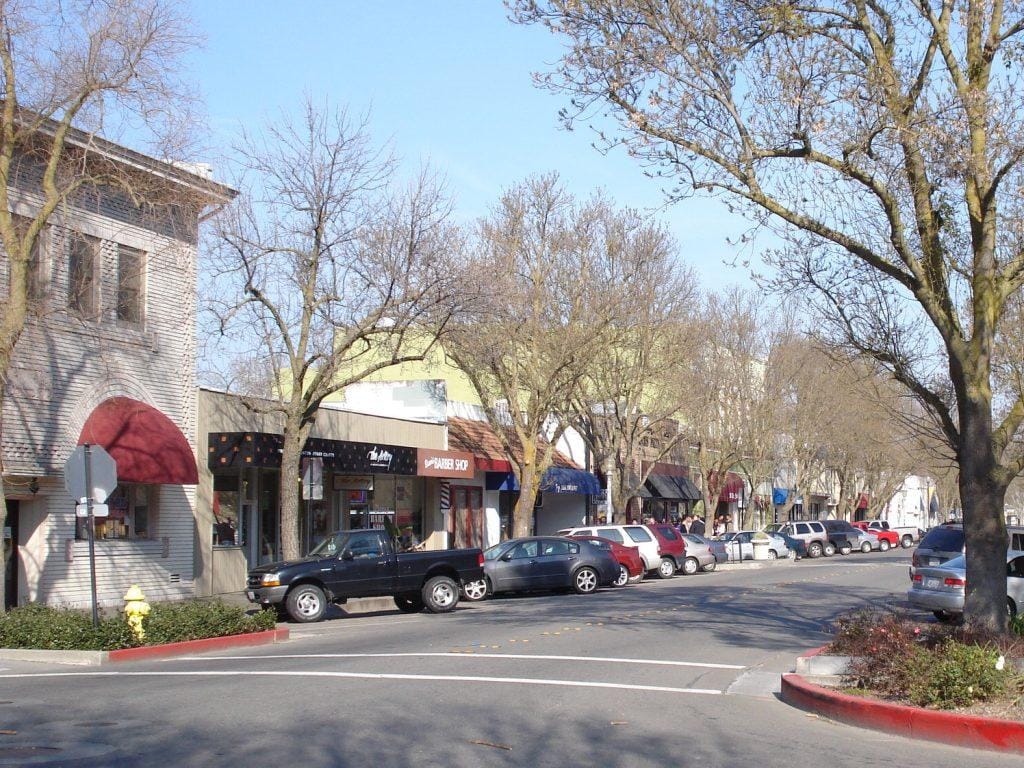
Davis is a city in Yolo County, located about 15 miles west of downtown Sacramento. It is best known for being the home of the University of California, Davis, one of the top public research universities in the world. Davis is also a hub for agriculture, biotechnology, and environmentalism.
Davis is located in the Sacramento Valley. It is bordered by Woodland to the north, Dixon to the west, Winters to the southwest, and Sacramento to the east. Davis is also close to the Napa Valley and the San Francisco Bay Area.
Davis has a population of about 67,000 people. Davis has a high cost of living, mainly due to its high taxes and fees. The median home value is $757,000, and the median rent is $1,869.
Pros of living in Davis
Davis offers a vibrant and diverse lifestyle for its residents, with many benefits such as:
- Davis is home to the University of California, Davis, which is one of the top public research universities in the world. The university attracts students, faculty, and staff from all over the world, creating a lively and diverse atmosphere. The university also offers many academic, cultural, and recreational opportunities for the community, such as the Mondavi Center, the UC Davis Arboretum, and the UC Davis Farmers Market.
- Davis is one of the most bike-friendly cities in the US, with over 100 miles of bike lanes, paths, and trails. The city also hosts the US Bicycling Hall of Fame and the annual Davis Bike Festival. Biking is a popular and convenient way to get around the city, reduce traffic, and promote health and sustainability.
- Davis is known for its progressive and tolerant culture, which embraces diversity, innovation, and social justice. The city has a strong arts and music scene, with many venues, festivals, and events. The city also supports various causes and initiatives, such as environmentalism, animal welfare, and human rights.
Cons of living in Davis
Davis also has some drawbacks that may deter some people from living there, such as:
- Davis has a high student population, which accounts for about 40% of the total population. This means that the city can be crowded, noisy, and chaotic during the academic year, especially near the campus. The city can also be quiet and empty during the summer and winter breaks, when many students leave the city.
- Davis has a limited nightlife, compared to other cities in the region. The city has a few bars, clubs, and restaurants, but they are mostly geared towards the student population. The city also has a strict noise ordinance, which limits the hours and volume of music and entertainment. For more nightlife options, people have to travel to Sacramento or the Bay Area.
- Davis has high taxes, which can be a burden for some residents. The city also has a parcel tax, which is a flat fee levied on each property. The parcel tax is used to fund various city services, such as schools, parks, and libraries.
3. Fair Oaks
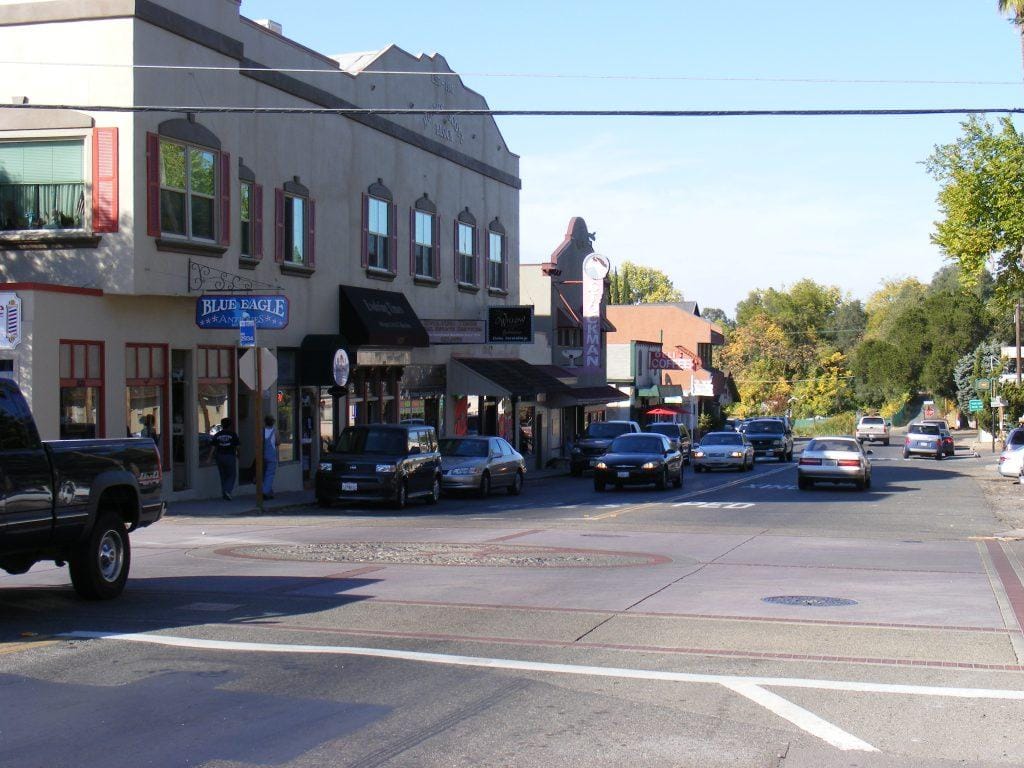
Fair Oaks is a census-designated place in Sacramento County, located about 14 miles northeast of downtown Sacramento. It is best known for its historic Fair Oaks Village, which dates back to the late 19th century and features a mix of old and new buildings, shops, and restaurants. Fair Oaks is also known for its abundant nature and wildlife, especially its chicken population.
Fair Oaks is located on the north bank of the American River. It is bordered by Citrus Heights to the north, Carmichael to the west, Rancho Cordova to the south, and Orangevale to the east. Fair Oaks is part of the Sacramento metropolitan area, but retains a rural and small-town feel.
Fair Oaks has a population of about 33,000 people. Fair Oaks has a moderate cost of living, mainly due to its reasonable housing market. The median home value is $699,000, and the median rent is $1,844.
Pros of living in Fair Oaks
Fair Oaks offers a charming and historic lifestyle for its residents, with many benefits such as:
- Fair Oaks is famous for its Fair Oaks Village, which is the original town center of the community. The village has a quaint and nostalgic feel, with a mix of old and new buildings, shops, and restaurants. The village also hosts many events and activities, such as the Fair Oaks Fiesta, the Fair Oaks Theatre Festival, and the Fair Oaks Chicken Festival.
- Fair Oaks is surrounded by nature and wildlife, which add to its beauty and appeal. The community has many parks, trails, and open spaces, such as the Fair Oaks Park, the Phoenix Park, and the Sailor Bar Park. The community is also home to many animals, especially chickens, which roam freely around the village and are considered a local attraction.
- Fair Oaks has a strong sense of community and pride, which fosters a friendly and welcoming atmosphere. The community is active and involved, with many clubs, organizations, and volunteer opportunities. The community also supports its local businesses, schools, and artists.
Cons of living in Fair Oaks
Fair Oaks also has some drawbacks that may deter some people from living there, such as:
- Fair Oaks has a lack of public transportation, which can make it difficult to get around the area or to other parts of the region. The community has a few bus routes, but they are limited and infrequent.
- Fair Oaks has a limited number of shopping and dining options, compared to other communities in the area. The community has a few local stores and restaurants, but they are mostly concentrated in the village or along the main roads. For more variety and choices, people have to travel to nearby cities, such as Citrus Heights, Folsom, or Sacramento.
- Fair Oaks has an aging infrastructure, which can affect the quality and reliability of some services and facilities. The community has some issues with water quality, sewer systems, roads, and bridges. The community also has some outdated and inefficient buildings, such as schools, libraries, and fire stations.
4. Roseville
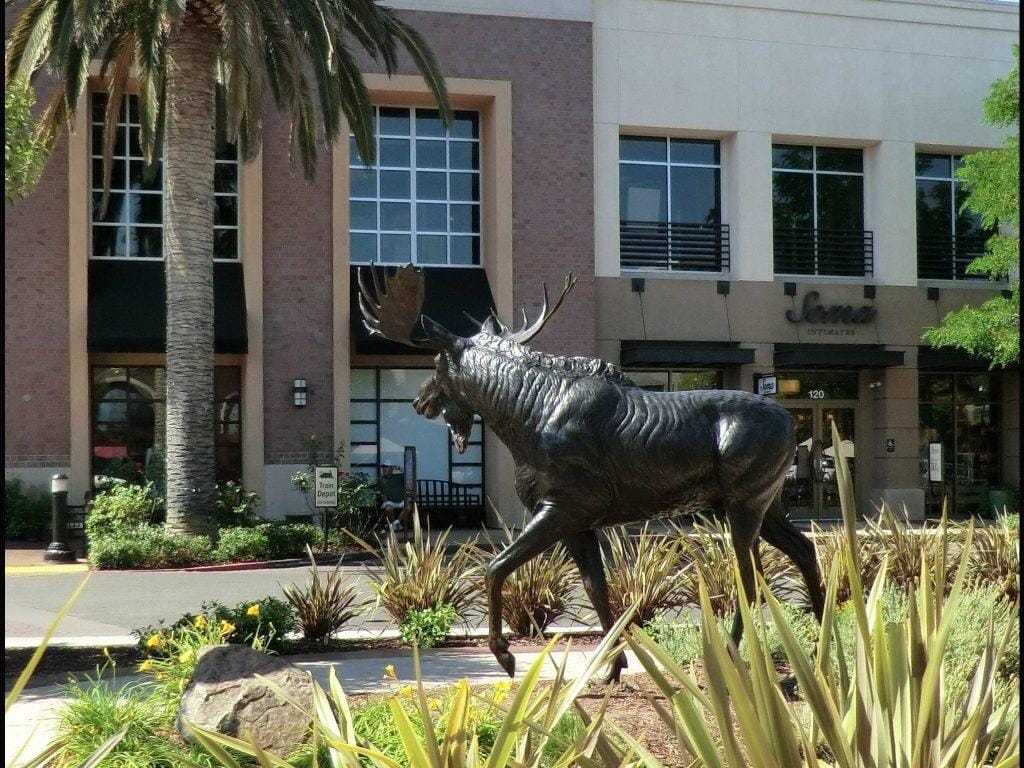
Roseville is a city in Placer County, located about 18 miles northeast of downtown Sacramento. It is best known for being one of the fastest-growing and most prosperous cities in the region, with a thriving economy, a modern and diverse amenities, and a family-friendly and safe environment.
Roseville is located in the Sacramento Valley, at the base of the Sierra Nevada. It is bordered by Rocklin to the north, Granite Bay and Loomis to the east, Citrus Heights and Antelope to the west, and Folsom and Orangevale to the south.
Roseville has a population of about 160,000. Roseville has a high cost of living, mainly due to its high cost of housing and utilities. The median home value is $609,000, and the median rent is $1,826.
Pros of living in Roseville
Roseville offers a thriving and modern lifestyle for its residents, with many benefits such as:
- Roseville is one of the most prosperous and successful cities in the region, with a strong and diverse economy. The city has many major employers, such as Kaiser Permanente, Hewlett-Packard, Sutter Health, and the Union Pacific Railroad. The city also has a low unemployment rate, a high median income, and a high growth rate.
- Roseville has a variety of amenities and attractions that cater to different tastes and preferences. The city has many shopping and dining options, such as the Westfield Galleria, the Fountains at Roseville, and the Downtown Roseville. The city also has many cultural and recreational opportunities, such as the Roseville Civic Center and Roseville Aquatics Complex.
- Roseville is a great place to raise a family, with a high quality of education, health, and safety. The city has some of the best schools in the area, with a high graduation rate, test scores, and college readiness. The city also has many parks, playgrounds, and sports facilities, such as the Maidu Regional Park, the Mahany Park, and the Mike Shellito Indoor Pool.
Cons of living in Roseville
Roseville also has some drawbacks that may deter some people from living there, such as:
- Roseville has one of the highest costs of living in the Sacramento area, mainly due to its high cost of housing and utilities.
- Roseville has a large and sprawling urban area, which covers about 43 square miles. The city has experienced rapid growth and development, which has led to some issues with congestion, pollution, and infrastructure.
- Roseville has a lack of cultural diversity, compared to other cities in the region. The city has a predominantly white population, which accounts for 70% of the total population. The city also has a low percentage of foreign-born residents, which is 11% of the total population.
5. Rocklin

Rocklin is a city in Placer County, located about 22 miles northeast of downtown Sacramento. It is best known for being one of the fastest-growing and most desirable cities in the region, with a rapid growth and development, an affordable and attractive housing market, and a recreation and entertainment opportunities.
Rocklin is located in the Sacramento Valley, at the base of the Sierra Nevada. It is bordered by Roseville to the south, Loomis to the east, Lincoln to the north, and Citrus Heights and Antelope to the west.
Rocklin has a population of about 75,000 people. Rocklin has a moderate cost of living, mainly due to its reasonable housing market. The median home value is $799,000, and the median rent is $2,124.
Pros of living in Rocklin
Rocklin offers a dynamic and attractive lifestyle for its residents, with many benefits such as:
- Rocklin is one of the fastest-growing and most desirable cities in the region, with a high demand and supply of housing, jobs, and amenities. The city has many new and planned developments, such as the Quarry District, the Rocklin Commons, and the Whitney Ranch. The city also has a low unemployment rate, a high median income, and a high growth rate.
- Rocklin has an affordable and attractive housing market, compared to other cities in the area. The city has a variety of housing options, such as single-family homes, townhomes, apartments, and condos. The city also has a low vacancy rate, a high homeownership rate, and a high appreciation rate.
- Rocklin has a plethora of recreation and entertainment opportunities, which cater to different interests and preferences. The city has many parks, trails, and open spaces, such as the Quarry Park, and the Clover Valley Park. The city also has many cultural and historical attractions, such as the Rocklin History Museum, the Finnish Temperance Hall, and the Rocklin Cemetery.
Cons of living in Rocklin
Rocklin also has some drawbacks that may deter some people from living there, such as:
- Rocklin has a high competition for housing, due to its high demand and low supply. The city has a low inventory of available homes, which leads to bidding wars, multiple offers, and higher prices.
- Rocklin has long commute times, especially for those who work in Sacramento or other cities in the region. The city has a limited public transportation system, which consists of a few bus routes and a commuter rail station.
- Rocklin has a low walkability, which means that most errands require a car.
Here are some other aspects of Sacramento you can consider to live in
Best place to live in Sacramento for families
The best place to live in Sacramento for families depends on your preferences and needs, but some of the most family-friendly places are Roseville, Folsom, and Rocklin, which have excellent schools, low crime rates, and plenty of parks and playgrounds.
Best place to live in Sacramento for young professionals
The best place to live in Sacramento for young professionals depends on your career and lifestyle, but some of the most popular places are Davis, Downtown Sacramento, and Midtown Sacramento, which have vibrant and diverse cultures, a strong academic and economic presence, and a variety of nightlife and entertainment options.
Best place to live in Sacramento for retirees
The best place to live in Sacramento for retirees depends on your budget and interests, but some of the most suitable places are Fair Oaks, El Dorado Hills, and Granite Bay, which have charming and historic villages, abundant nature and wildlife, and active and friendly community.
Best place to live in Sacramento for nature lovers
The best place to live in Sacramento for nature lovers depends on your favorite outdoor activities, but some of the most scenic and natural places are Folsom, Davis, and Fair Oaks, which have access to the American River, the Folsom Lake, the UC Davis Arboretum, and the Fair Oaks Park.
Best place to live in Sacramento for culture and history enthusiasts
The best place to live in Sacramento for culture and history enthusiasts depends on your favorite genres and periods, but some of the most cultural and historical places are Downtown Sacramento, Old Sacramento, and Folsom, which have museums, theaters, galleries, and landmarks that showcase the history and culture of Sacramento and California.
Conclusion
Sacramento is a great place to live, with many options for different lifestyles, preferences, and budgets. However, choosing the best place to live in Sacramento can be challenging, as each place has its own pros and cons. In this article, we have explored five of the best places to live in Sacramento, based on various criteria such as location, population, cost of living, quality of life, and amenities. These are:
- Folsom: a modern and affluent city, with a low crime rate, excellent schools, and a high quality of life.
- Davis: a vibrant and diverse college town, with a bike-friendly community, a diverse and progressive culture, and a strong academic reputation.
- Fair Oaks: a charming and historic village, with abundant nature and wildlife, an active and friendly community, and a rural and small-town feel.
- Roseville: a thriving and modern city, with a booming economy and job market, a modern and diverse amenities, and a family-friendly and safe environment.
- Rocklin: a dynamic and attractive city, with a rapid growth and development, an affordable and attractive housing market, and a recreation and entertainment opportunities.

